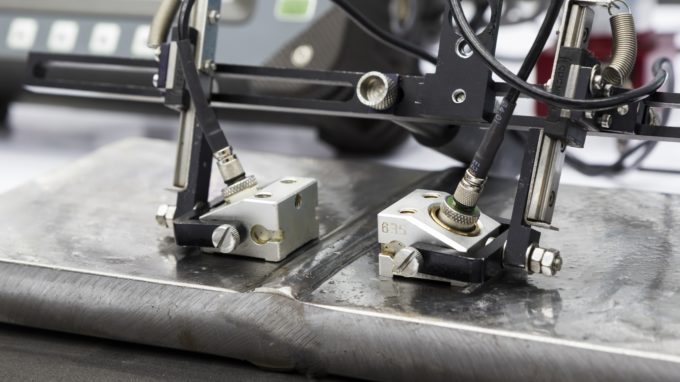How Ultrasonic Welding Works

Assemblies that do not require connectors or fasteners such as nails, bolts, adhesives, or solder to bind the materials together have the advantage of fewer points of weakness. Even during assembly, many components are scrapped due to fastener failures such as stripped threads or damage to the screw head.
Ultrasonic welding overcomes these manufacturing challenges and takes it one step further. It is one of the few welding processes that can join dissimilar materials together, such as plastic and metal.
Advantages of Ultrasonic welding
Ultrasonic welding uses the heat generated by mechanical motion at a high frequency to effectively weld or join two materials. The process converts high-frequency electrical energy into high-frequency mechanical motion along with force. The entire process creates enough frictional heat to both melt and mate plastic materials together or with other materials.
The main advantage of ultrasonic welding is that it produces a very clean, tight, and high-quality seal without the use of any filler material like adhesive or solder. The result is a product without visible seams at joints, which results in a product that is more visually attractive and more sanitary.
Ultrasonic welding is also a faster process because there is no need for an employee or machine to handle both fastener and tool. The higher productivity and lower cost of production is translated into more profit for manufacturers.
And, ultrasonic welding beats out other non-fastener connection methods like adhesives, welding, or soldering, because there is no curing or drying time. Today, ultrasonic welding processes are highly automated, resulting in cost savings on manpower. The resulting higher profits are directly tied to the manufacture of products using ultrasonic welding that can be sold at competitive prices and with higher quality.
What is the Difference Between Ultrasonic Welding and Vibration Welding?
During the typical vibration welding of thermoplastics, one of the two parts will move at a high frequency while under pressure to generate the friction heat required to bond the two surfaces. But, this frequency is much lower than the frequencies used with ultrasonic welding.
In ultrasonic welding, electrical energy is converted into vibrational energy of approximately 20 kHz (most widely used) or 40 kHz (used for small, delicate parts). Compare this to most industrial vibration welding machines that will operate at weld frequencies of 120–240 Hz.
Also, the amplitude (the measurement of vibration or oscillation, measured from the position of equilibrium) of vibration welding is greater, typically between 0.4 and 1.8 mm. In contrast, ultrasonic welding amplitudes are much smaller, between 25 and 125 microns or 0.025-0.125 mm.
The lower the wave amplitude, the higher the frequency, resulting in a faster and better quality weld. Actually, welding times for ultrasonic processes can fall between 1 and 3 seconds, while the same vibration weld would take a cycle in the 5-10 second range.
Ultrasonic welding is recommended for smaller parts under 6 inches, and even miniature electronic components. This is one of its greatest benefits since so many of our electronic products depend on good welds on extremely small parts like earbuds and many aerospace and automotive components and medical products.
Best Uses of Ultrasonic Welding
Ultrasonic welding is used in some surprising applications because of its ability to join thermoplastics together without leaving a seam. Athletic shoes, rubber tires, and plastic duffel bags are some consumer products that are made with this less expensive method of joinery.
The medical industry requires rubber and plastic medical devices that are without seams, making them more sanitary and easier to clean. And, these items remain lightweight because this type of welding process requires no other material to secure the bond. It is the device material itself that is used to form a non-leaking, totally sealed bond on a wide variety of medical devices and products.
The computer and electronics industries benefit from housing that can withstand some moisture due to the seal that ultrasonic welding creates. The thermoplastic joints used in circuit boards, wiring connections, and cable ribbons are of better quality and are more reliable due to this type of welding process.
Ultrasonic fastening and cutting processes have been automated, removing many of the errors introduced by traditional manufacturing methods on small, complex, or delicate assemblies. Throughout the automotive, marine craft, and aeronautics industries, ultrasonic welding has ushered in faster production and greater quality assurance.
STE for Ultrasonic Welding
Special Tool & Engineering (STE) has been supplying manufacturing industries with engineering, design, and manufacturing solutions for over 20 years. As a leader in producing tooling for the automotive, household appliances, office equipment, electronics and packaging industries, we constantly promote our operations to take advantage of cutting-edge technologies and emerging best practices.
Our commitment to quality products and expert consultation has earned us the reputation for delivering exceptional results, and we have developed long-term partnerships with our clients because of it. Contact us to find out more.




